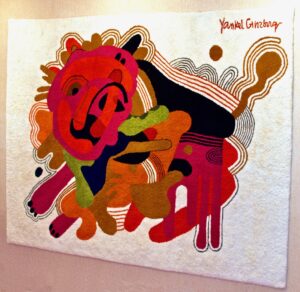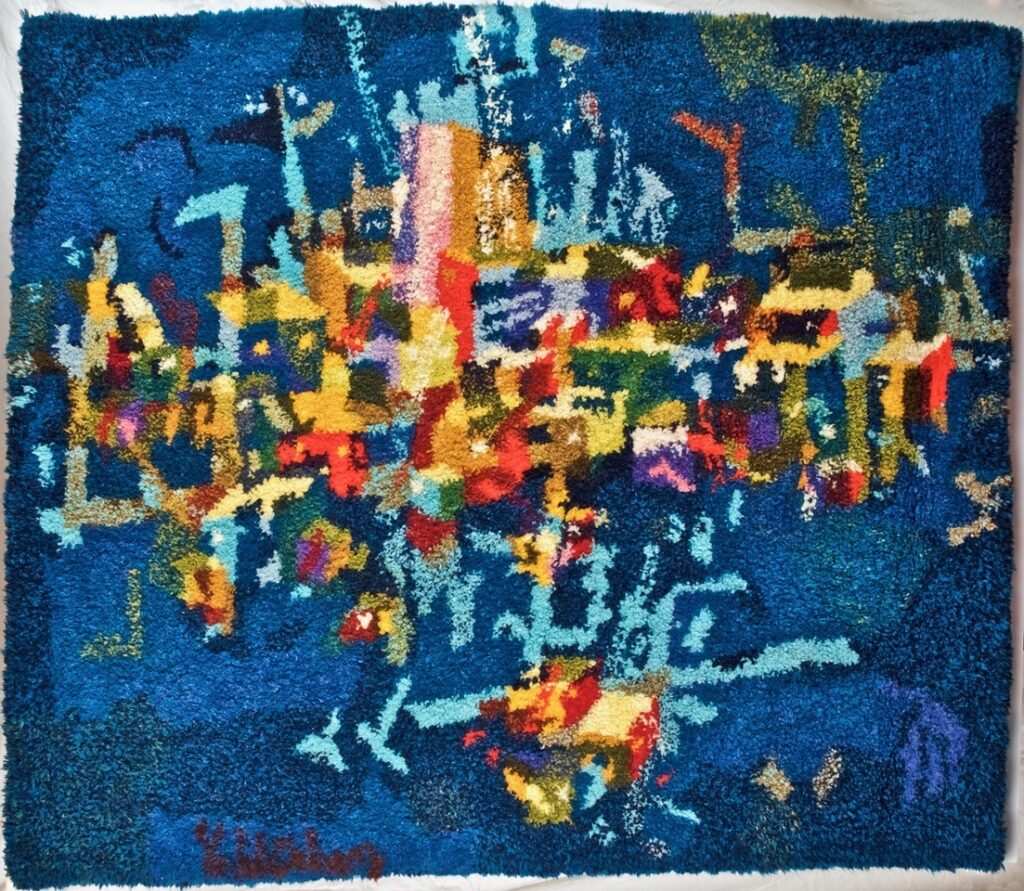The History of the Wall Tapestry

“Leo” Wool Tapestry by Yankel Ginzburg
A tapestry is a piece of thick textile fabric with pictures or designs formed by weaving colored weft threads or by embroidering on canvas. Sometimes it looks like a carpet! It is most commonly used as a wall hanging or furniture covering.
When people think of tapestries, they might imagine the ones from the medieval times or the Renaissance. The series of six tapestries, titled “The Lady and the Unicorn,” from the Renaissance period, is a famous example. In fact, the history of the wall tapestry shows that it was an art form appreciated throughout the ages.
Ancient Times
The existence of the wall tapestry appears as far back as the ancient civilizations from over 5,000 years ago. Ancient paintings and mosaics depicting weavers show that the ancient Egyptians, Babylonians, Greeks, and Romans all used tapestries in some way, likely for the homes of the wealthy, political centers, and temples.
The 700s
Although the art of tapestry-making died out in the West for a considerable time, it appears that it reemerged through the Moorish invasion in the early 700s. Tapestry-making then spread from Spain to France and Belgium, particularly Flanders, where the trade flourished.
Medieval and Renaissance Times
The wall tapestry was mainly the property of royalty and the church in medieval times, depicting victories in war, lives of nobles, and religious scenes. They served as an education to the people, decoration, and insulation for the cold stone walls of castles and cathedrals. Flanders, Switzerland, and Germany took the reins in tapestry production during this time, and while the men underwent a 12-year apprenticeship, the women were only allowed to spin the yarn; hence, the term “spinsters” came about. Through the Renaissance, tapestries evolved to depict allegories, famous contemporary paintings, and continued to only be available to the wealthy.
The 1800s
As wallpaper, furniture, and mirrors began to take over interior design, the exquisite, labor-intensive craft of wall tapestries declined, particularly during the latter half of the 1700s. The wall tapestry may have been lost as an art again if it were not for William Morris in the mid-to-late 1800s. He and others created designs for tapestries, rugs, wallpaper, and more, inspired by medieval artwork.

“City in Blue” Wool Tapestry by Yankel Ginzburg
Present Day
Wall tapestries are far from obsolete and are available for homes today. They are no longer just for kings! Today, 20th century artwork, such as Yankel Ginzburg’s “Leo,” or his “City in Blue” are also available to the sophisticated collector. We can expect tapestries to remain as fundamental an artwork form as they have been for centuries.
Contact Zimmerman Fine Art Today!
Since 1979 Zimmerman Editions Ltd. has worked closely with many internationally acclaimed artists to execute editions of their most unique images. Collaborating directly with the artists, Zimmerman Editions’ atelier has printed, fabricated, and published many special limited editions of fine art, including both prints and sculptures. All images have been faithfully produced to meet the artists’ most exacting requirements. Many of these high-quality art prints and objets d’art are represented in public and private collections around the world.
If you are a fine art dealer or marketer, or interested in collecting contemporary fine art, contact us today through our short form or our phone number at 888-484-1850 or 410-486-7634. For more about fine art, keep in touch through Facebook, Twitter, and LinkedIn!
